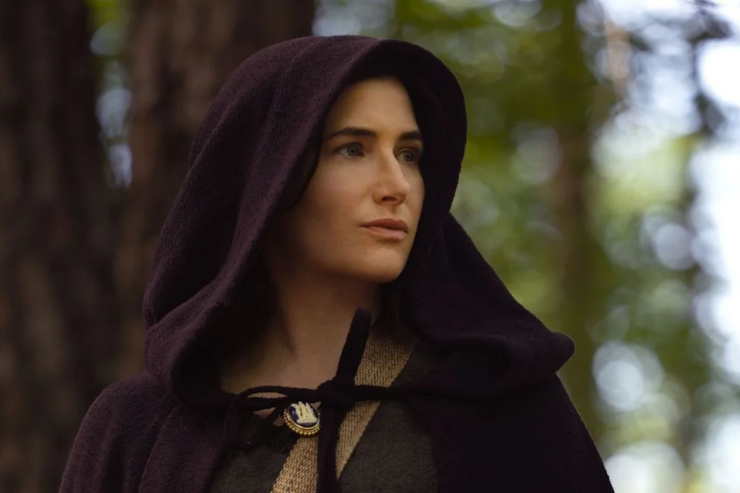As soon as the WandaVision spinoff Agatha All Along was announced, I knew we were in for a treat. I mean, come on—Kathryn Hahn’s cackling antihero in her own series? With Patti LuPone and Aubrey Plaza? And the obvious introduction of Billy Maximoff, AKA Wiccan? The stars were aligned for this show from the start.
What I didn’t have high hopes for, given the fact that the show is part of the Marvel Cinematic Universe, was its depiction of witchcraft and magic. I love the MCU, but like so many other franchises, it portrays magic as mostly pyrotechnics, and watching characters shoot CGI energy blasts at each other is never very interesting. Plus, when it comes to witches, a writers’ room has plenty of lazy tropes and clichés to draw from. Why bother learning about actual witchcraft when you can just stick a pointy hat on someone and call it a day?
Well. As a practicing witch of almost 30 years, I’m happy to report that Agatha blew me away on that front, too.
To recap: At the beginning of the series, Agatha Harkness wakes up after a three-year stint trapped in Wanda Maximoff’s spell. Wanda has sucked Agatha’s powers dry, leaving her with no magic, so Agatha gathers a motley coven of other down-and-out witches to try and get their magic back. At first, none of them are optimistic about doing witchcraft with no special effects, but Billy has an elegant suggestion: “Analog magic,” he says. “Witchcraft, emphasis on the craft.”
What does that mean, exactly? It means dog-eared spellbooks, murmured incantations, candlelit rituals, and lots of hard work. It also means that showrunner Jac Schaeffer actually knows her stuff.
In an interview published on the Marvel website, Schaeffer is pretty explicit about wanting to do right by witches, describing how she spoke to real witches and had her writers give presentations on witchcraft. “We started with a lot of research,” she says. “Who are witches in pop culture? Who are witches in history? What is the mythology, and what is the reality? …. It wasn’t just: ‘We’re doing witches.’ That central question of ‘What is a witch?’ became a part of the show.”
So, what did Schaeffer and her writers get right about witchcraft? While Agatha still has its share of CGI fights, I found the show’s attention to detail genuinely moving. Here are some of the most important things the show nailed about the beliefs and practices of real witches.
Note: Some spoilers for the series from this point on…
The path of the witch is a circle
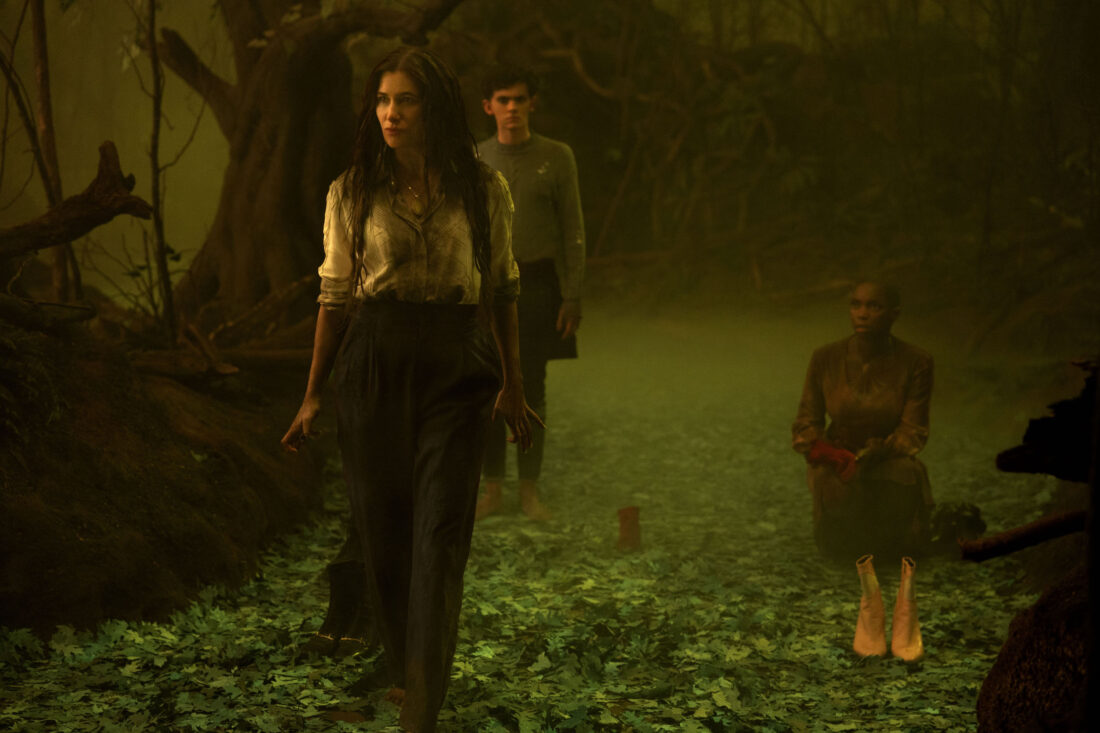
There’s a fascinating moment in episode 8 when Agatha, Billy, and Jen (Sasheer Zamata) try to reach the end of the Witches’ Road. When they come upon their own shoes, which they took off at the very beginning of the journey, they realize that the entire road is a circle. In walking it, they’ve ended up back at the beginning.
The Road is actually Billy’s creation—more on that in a bit—so he instinctively knows how to break the cycle and move on. However, the idea that the path of the witch is recursive is fundamental to many witchcraft traditions. The author Starhawk sees witchcraft as a spiral, continually expanding and contracting, going back to its source before unfolding again. Cornish witch Gemma Gary uses the image of a labyrinth as a meditation tool, tracing her way into the labyrinth’s center and then out again. Other witches have described witchcraft as a crooked path or an ouroboros. There’s no endpoint in witchcraft; the path itself is the work and the reward.
We see this idea play out in Agatha’s storyline, albeit in a subtle way. Agatha sees her life as a linear quest for ever-increasing power. However, when she finally reaches the end of the road and demands her prize, she doesn’t level up and go off to wreak more havoc. Instead, she sacrifices herself to save Billy’s life. She finally faces the grief she’s been carrying since the death of her son Nicky, and she surrenders to the cycle of life and death that’s been chasing her for centuries. After that, she starts the cycle over by acting as Billy’s spirit guide.
Speaking of life and death, let’s talk about the show’s resident green witch.
She’s not so much a green witch…
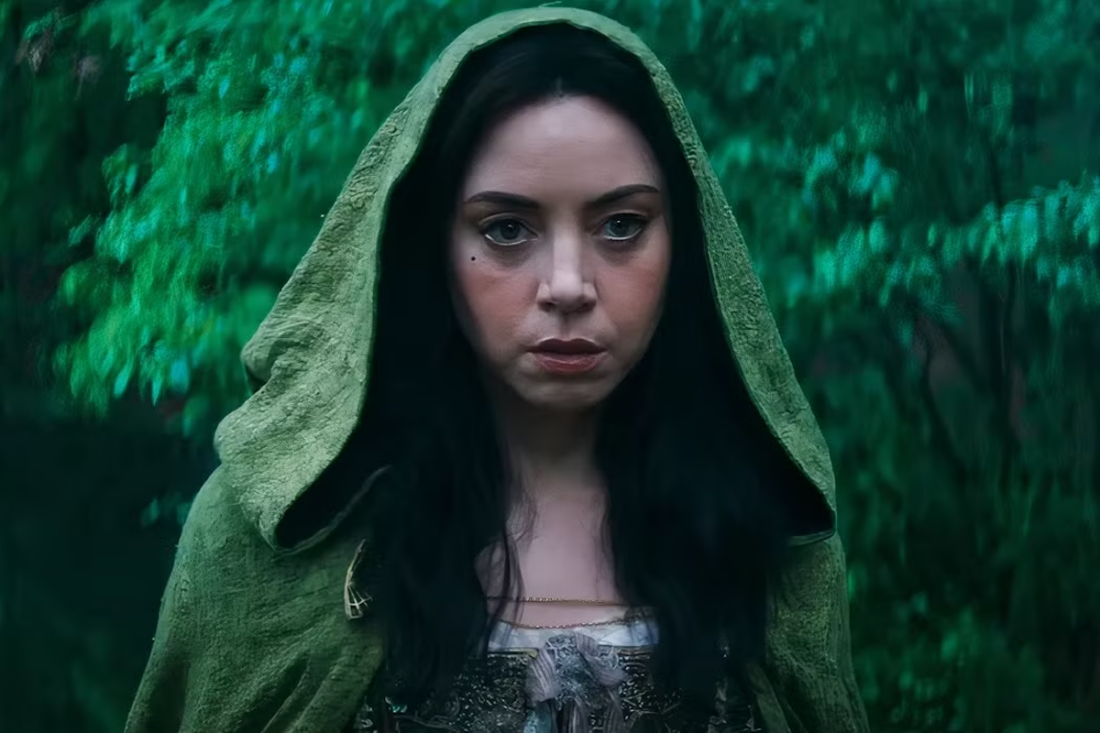
In classic Marvel fashion, the true identity of Rio Vidal was spoiled early by a Funko Pop, but it’s still a pretty amazing reveal. After calling herself “not so much a green witch as THE! GREEN! WITCH!” Rio is revealed to be Death herself. Jen later explains the logic to Billy. “Green craft is about the cycle of all living things,” she says. “Growth and decay in constant flow.”
Green witchcraft is an actual tradition of earth-based spirituality. There are lots of books on the subject (full disclosure: I wrote one of them), but on the surface, it can often look like little more than an affinity for gardening and essential oils. If you own a potted plant and a tarot deck, there’s nothing stopping you from calling yourself a green witch.
There’s nothing wrong with that—no one owns the word “witch”—but I was impressed with how Agatha handles the subject. Coming to terms with the cycle of life and death is one of the deepest aspects of any spiritual path, including green witchcraft, and Rio’s character shows that Agatha’s writers thought about this stuff more deeply than some actual practitioners do.
In fact, Schaeffer explains her thought process in another interview, saying that she thinks of Death as a kind of debt collector. “Witchcraft is a lot about intention and exchange and checks and balances,” she says. “So we had this notion of someone being after [Agatha’s coven] for unpaid debts of witchcraft.” Keeping an ecosystem healthy through balance and reciprocity is essential to green witchcraft, and death is the ultimate keeper of balance.
All that’s good is bad, and all that’s bad is good
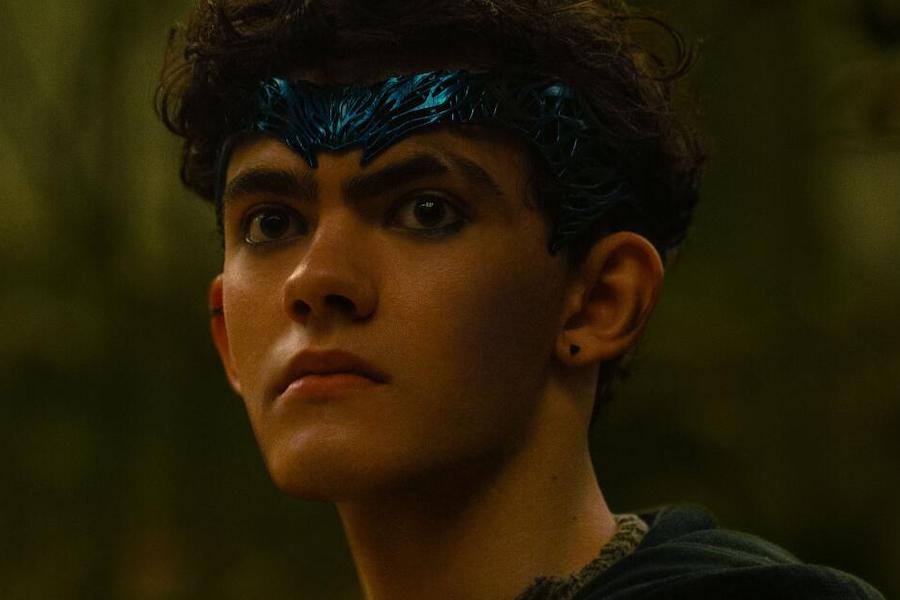
Let’s go back to the part where Agatha’s coven loops back around to the beginning of the road and finds their own shoes. Removing your shoes to enter sacred ground is an ancient concept (see, for instance, Moses approaching the burning bush in the Book of Exodus), but Billy unlocks the next trial by putting his shoes back on, intentionally desecrating the road. Now that’s an interesting choice.
Witchcraft has long been associated with the profane. Medieval depictions of witchcraft include the black mass and the witches’ sabbath, both of which supposedly involved witches desecrating Christian symbols. Those myths are mostly misogynist hysteria, but when you look at esoteric traditions, you actually do find an emphasis on the dissolution of opposites. Take, for instance, the horned and winged deity Baphomet, popular with witches and occultists. Both male and female, human and animal, Baphomet is a symbol of balance through the union of opposites, including good and evil. Like a Zen kōan, the symbols and rituals of witchcraft knock you out of ordinary ways of thinking, opening you up to deeper insight.
There’s also another layer of moral complexity in Agatha: the fact that no one in the coven is an especially great person. Jen’s being sued for selling sketchy edible candles. Lilia isn’t above conning people when she needs to. Billy worries that he’s killing an innocent boy to resurrect his brother Tommy. Alice and Sharon … actually, they’re both decent. But Agatha needs no explanation.
Look at each character’s history, though. Jen was a midwife and rootworker before her powers were bound by a jealous obstetrician (with Agatha, a white woman, siding with the patriarchy over a fellow witch). Agatha’s behavior is rooted in unbearable pain and an abusive mother. No one is born inherently bad or good. Rather, people sometimes do bad things when circumstances back them into a corner. Witches are complicated people, because…
Witchcraft has always been a refuge for the marginalized
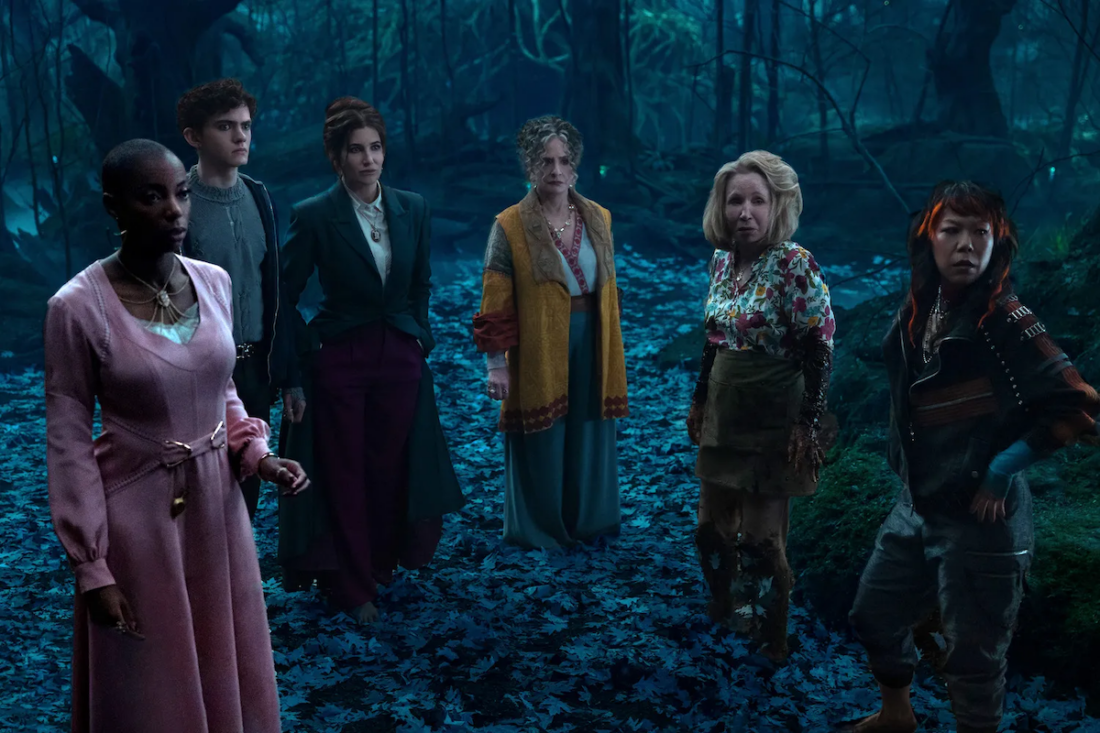
If you told me a few years ago that I’d be watching a Marvel show starring older women and queer people, I’d have laughed. No way! The MCU is the domain of Captain America and Iron Man. They’d never let people like me into that world. Now I’m planning my Lilia Calderu cosplay for Comic-Con.
Stretching back before recorded history, witchcraft has been a sanctuary for anyone forced to find a home in the fringes of society. After all, when you can’t change a system from within, then you work outside that system, using whatever tools you can get. Women, people of color, queer folks, disabled and neurodiverse people—look at witchcraft, and you’ll find them all there. It only makes sense, then, that Agatha’s coven be a cross section of the people who have kept traditions like cunning craft, rootwork, and other forms of folk magic alive for generations.
We even see this dynamic in the MCU. The Doctor Strange franchise establishes Kamar-Taj as the preeminent institute for sorcery—and the sorcerers there make it clear that they don’t approve of witchcraft. Sorcery is a respectable art, with institutional backing. Witchcraft, on the other hand, is performed on the downlow.
Lots of authors have written about this topic, too (two excellent places to start are Becoming Dangerous, edited by Katie West and Jasmine Elliot, and Brujas: The Magic and Power of Witches of Color by Lorraine Monteagut, PhD), but Charlie Claire Burgess, creator of The Gay Marseille Tarot, puts it especially poignantly in their book Radical Tarot: “Old gods and new gods and DIY queered gods have provided the comfort, confidence, and faith to keep going, love ourselves, and create our own communities outside of the bounds of the norm.”
That quote leads me to one of my favorite aspects of witchcraft: that it’s even more DIY than you think.
Witchcraft is made up—but that doesn’t mean it’s not real

In the last episode of Agatha, we find out that the Witches’ Road is fake. It’s a con that Agatha uses to lure witches to her so that she can drain their power. But, as with everything else in this deliciously complicated show, there are layers underneath that truth.
We learn that Agatha’s son Nicky first came up with the song, singing “down the windy road” one day as he and Agatha walked along a dirt path. The idea of the Road eventually gains momentum, with Nicky performing the song in inns, until Agatha is approached by a witch who thinks it’s real. Lorna Wu adapts it into a hit rock song, turning concertgoers into her coven and successfully weaving a protection spell for Alice into it. Finally, Billy believes in it so thoroughly that his latent powers make it real.
When you look at witchy lore, you’ll notice an interesting pattern: an ancient belief becomes a fairy tale when it’s forced underground by a more dominant religion. That fairy tale gradually becomes secularized, with all traces of paganism seemingly stripped from it. Then, someone recognizes the hidden kernel of divinity in it, and re-infuses it with magic. One example is the story of Baba Yaga, the Slavic witch who lives in the woods in a hut with chicken legs. Scholars believe she’s based on an ancient goddess, and many modern witches venerate her as such.
You see the same pattern with spellwork and ritual, too. Teen girls in the ’90s, like me, learned how to do binding spells from the movie The Craft. Witchcraft is kept alive through cultural feedback loops, where bits and pieces are adapted for mass media and then reabsorbed into real practices. Kind of like Lorna’s ballad!
Is the Witches’ Road real? It isn’t—until suddenly it is. The door opens. The Road delivers what the ballad promises, giving the survivors exactly what they seek. (You could argue that Agatha gets her powers back from Billy, not the trials, but she still gets them because she walked the Road.) That’s how witchcraft works. A song or story or rhyme may sound like nonsense on the surface, but then you decide to try it anyway. You light a candle, dim the lights, and slow your breathing. You sing an incantation with just the right combination of reverence and playfulness, setting aside all expectations. Maybe nothing happens, and you chuckle at yourself and forget about the experience. But maybe something does happen.
What happens, you might ask? I’m not telling. You’ll just have to try it for yourself.
Watching Agatha over the past few weeks, I realized something. This show wasn’t just well-written and fun to watch. Watching these beautiful, broken characters practice such a lush and rich portrayal of witchcraft really meant something to me.
Yes, Agatha All Along is a Marvel show; yes, they shoot some energy blasts and literally ride broomsticks. But woven through the more fantastical elements of the show is obvious respect for—and, dare I say, love of—not just witchcraft itself, but all the glorious weirdos who find power and community in the margins. Agatha shows that when you’re depicting a living tradition, you can get it right if you try. And the result is nothing short of magical.










